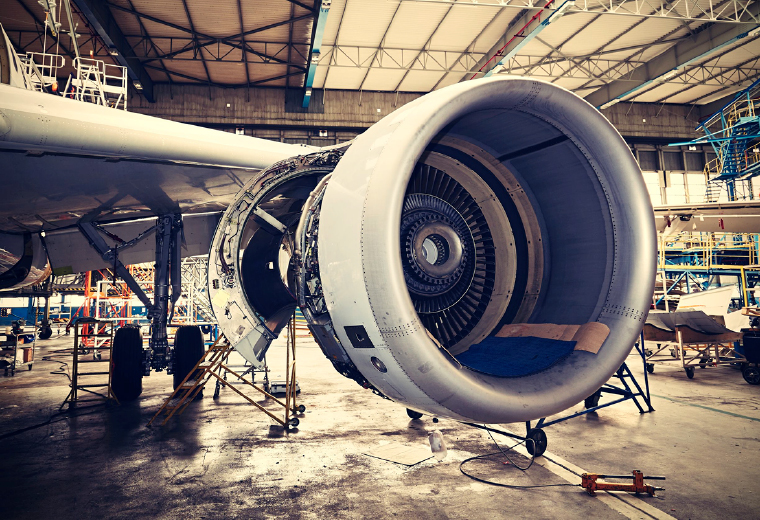What is AS9110:2016/AS9110C?
AS9110 is the standard for repair stations and is based on AS9100 but adds specific requirements that are critical for the maintenance of commercial, private, and military aircrafts.
This standard is intended for use by organizations whose primary business is providing maintenance or continuing airworthiness management services for civil or military aviation articles and products and by original equipment manufacturers with maintenance, repair, and overhaul operations that are operated autonomously, or that are substantially different from their production operations.
Please note: This standard is offered by our US office only, with ANAB accreditation.
Helps you with
- Global recognition
- Access to large OEM's
- Proving business credentials
- Process effectiveness
- Customer satisfaction
- Product improvement
- Supply chain access
- Entry onto the IAQG Online Aerospace Supplier Information System (OASIS database)
Is AS9110 certification right for my organization?
Prepared by the International Aerospace Quality Group (IAQG), with representatives from aviation, space, and defense companies in the Americas, Asia/Pacific and Europe, AS9110:2016/AS9100C standardizes quality management system requirements. It can be used at all levels of the supply chain by organizations around the world, to improved quality, cost, and delivery performance.
This is accomplished through the reduction or elimination of organization-unique requirements, effective implementation of the quality management system, and wider application of good practices.
While primarily developed for civil and military aviation industry organizations providing maintenance services, this standard can also be used in other industry sectors when a quality management system with additional requirements over an ISO 9001:2015 system is needed.
This standard includes ISO 9001:2015 quality management system requirements and specifies additional civil and military aviation maintenance and continuing airworthiness industry requirements, definitions and notes.
All of the AS9100 series of standards underwent significant change in late 2016. Though a number of those changes were neccessiated by a change in the base standard, ISO 9001:2015, many of the aviation, space and defense industry requirements were also modified and enhanced.
Following the structure of ISO 9001:2015, AS9110:2016 includes requirements specific to:
- Context of the organization
- Leadership
- Planning
- Support
- Operation
- Performance Evaluation
- Improvement
What's new with AS9110:2016?
Within the sections of the AS9110:2016 standard, new requirements above and beyond those specified in the previous revision AS9110B address:
Risk Based Thinking - The concept of risk has always been implicit in ISO 9001 but AS9110C makes it more explicit and builds it into the whole management system. It ensures that risk is considered from the beginning and throughout and makes “prevention” part of strategic and operational planning.
Clause 6.1 - is related to risks in the quality management system such as new customers, new market, company partnerships, business localizations etc. Unlike clause 6.1, operational risk in 8.1.1 is applicable to the risks within the operational processes needed for the provision of products and services such as contract review and signature, new technologies introduction, external providers selection etc.
Concept of Change - Provides a framework which evolves to enable organizations to adapt to their changing environments or circumstances. The benefits of a robust process to control change is that business continuity is maintained and potential consequences of change are appropriately considered.
Organizational Knowledge - Knowledge specific to the organization is gained by experience and conveyed through lessons, identification of experts and the implementation of succession planning. AS9110:2016 can help you safeguard the organization from loss of knowledge, (e.g., through staff turnover; failure to capture and share information) and encourages your organization to acquire (e.g., learning from experience, benchmarking) and share knowledge (e.g. mentoring of newcomers).
Product Safety - including requirements to address product safety considerations throughout the product lifecycle.
Counterfeit Parts Prevention - Provides requirements to mitigate the effects of the growing threat of counterfeit / fraudulent product while recognizing the emerging counterfeit/fraudulent statutory/regulatory requirements on AQMS processes.
Suspect or Unapproved Parts - Similar to the definition and handling of counterfeit parts, suspect or unapproved parts are those where there is objective and credible evidence indicating that the part was likely not produced or maintained in accordance with approved or acceptable data. AS9110:2016 addresses this issue through internal activities such as nonconformance control, reporting, training, procurement, sources selection and control & inspection.
Awareness - AS9110:2016 now requires employees to be aware of their contribution to product or service conformity, to product safety and the importance of ethical behaviour.
Human Factors - Requires the consideration of human factors in the root cause analysis for nonconformities. To do that you must understand the interactions between people, machines and each other and their impact on human performance. Human factors could include physical fitness, physiological characteristics, personality, stress and fatigue to name just a few.
Steps to Certification
-
Step 1
Complete a Quote Request Form so that we can understand your company and requirements. You can do this by completing either the online quick quote or the online formal quote request form. We will use this information to accurately define your scope of assessment and provide you with a proposal for certification.
-
Step 2
Once you’ve agreed your proposal, we will contact you to book your assessment with an NQA Assessor. This assessment consists of two mandatory visits that form the Initial Certification Audit. Please note that you must be able to demonstrate that your management system has been fully operational for a minimum of three months and has been subject to a management review and full cycle of internal audits.
-
Step 3
Following a successful two stage audit, a certification decision is made and if positive, then certification to the required standard is issued by NQA. You will receive both a hard and soft copy of the certificate. Certification is valid for three years and is maintained through a programme of annual surveillance audits and a three yearly recertification audit.


